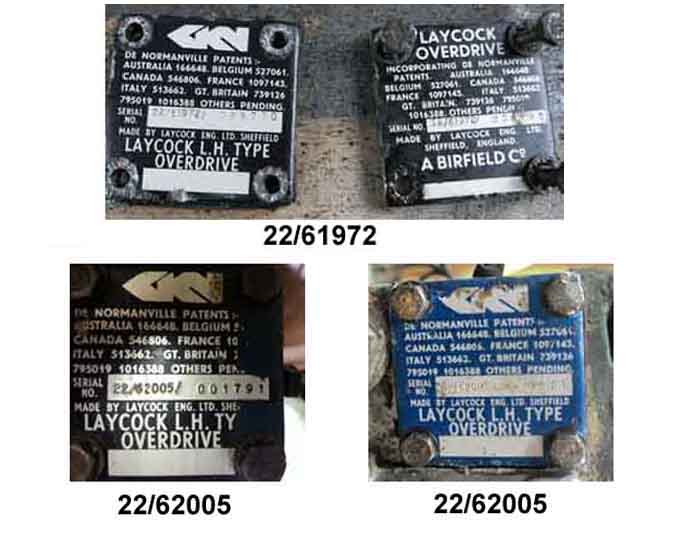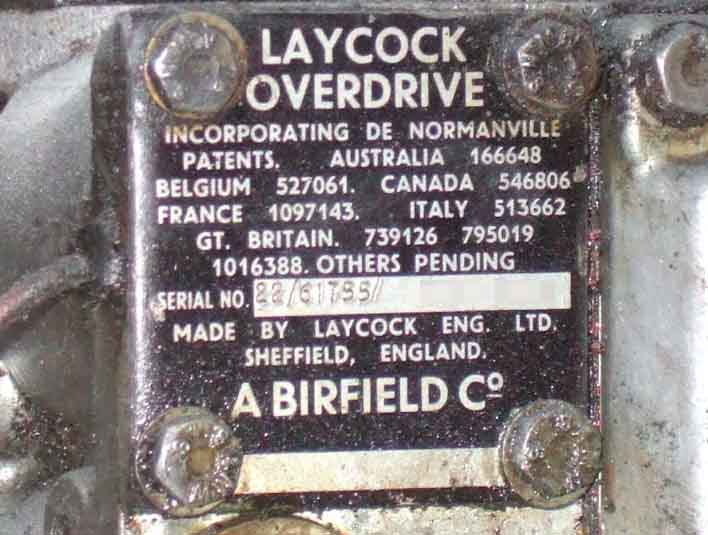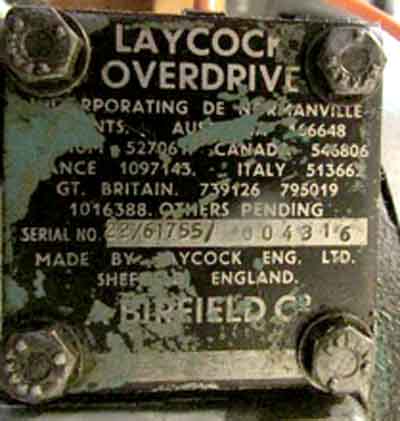Lots of different types around although most don't apply to the MGB. Of the numbers stamped onto the cover Vance Navrette writes:
The TR J-Types delivered a 25% OD factor (e.g. for every revolution on the input shaft, the output shaft rotates 1.25 revolutions).
TR A-Type ODs delivered a 22% overdrive.
TR J-Type ODs delivered a 25% overdrive.
Volvo J-Types delivered a 27% or 28% overdrive."
1955-1964 = A-type, non-synchronized first gear - 22/61374/ - TR2 from TS5979-TR4 Oct. 64
1964-1967 = A-type, synchronized first gear - 22/61712/ - TR4/4A Oct. 64-67 solid rear axles.
1965-March 1971 = A-type, synchronized first gear - 22/61753/ - TR4A (IRS only), TR250, TR6
April 1971-November 1972 = A-type, synchronized first gear - 22/61985/ - TR6
December 1972-1974 = J-type, synchronized first gear - 25/115838/ - TR6
1975-1976 = J-type, synchronized first gear - 25/115876/ - TR6
22 and 28 are also common to Austin Healeys though (all Healeys used A-types).
Spitfires from 1974-1981 also used the 25 spec J-Type."
In common with many of the above MGBs used the 22% type, with a black label on CB cars and a blue on RB. There are said to be different colours for MGC and V8 to denote higher pressures perhaps, but opinions vary as to which was green (MGC?) and which was red (V8?). Overdrive Repair Services in Sheffield who are ex-Laycock engineers have told me that if they ran out of a colour they used whatever they had to hand, albeit with the correct numbers stamped!
The second group of numbers are initially five digits starting with '6', the remaining four digits going up in jumps. Then from the above apparently changing to six digits starting with '11', with the remaining four digits continuing to go up in jumps. This group could indicate small internal changes of design or component, but I'm guessing, they don't seem to relate to date unless it is a code. The final group of digits is the individual serial number of the unit.
The following are from 4-cylinder MGBs. The first pair carry the same numbers but represent two different eras of production changing in the mid-70s, see below. Of the second pair the black label should have a 1280tpm speedo drive gear and the blue label should have a 1000tpm speedo drive gear, but they both have the same reference number:

Change in ownership - Laycock was sold to Birfield in 1938, and although GKN bought Birfield and hence Laycock in 1966 the units were badged Laycock/Birfield until the 'mid 1970s' (Wikipedia) when it became 'GKN'. However the '61972' of the top pair implies it could have been the very early 70s going by the dates above:
Bee's plate - '1972' seems quite common for 4-cylinder cars and is in line with the A-type sequence above. 'GKN' indicating that the badging changed by September 72 (Bee's build date) as well as the dates above:

V8s always used a 960tpm speedo drive i.e. for both CB and RB, this is Vee's plate. A number lower than one might expect for a 1975-built car and earlier than Bee's. Also the earlier 'Laycock/Birfield' plate, so maybe Vee has had a replacement OD:

The plate from a V8 owned by Geoff Dunlop in Australia that started it all - one of the higher five-digit numbers as on the J-types above:

Reputedly an MGC plate with the same reference number as Vee's above, but MGCs seem to have had a 1020tpm or a 1120tpm speedo depending on which axle was fitted, which varied according to year and whether it had standard, OD or automatic transmission. MGCs also had 15" wheels with 185/70 tyres which result in a speedo under-read of 6% compared to the standard MGB roadster. So just like a black-label OD can drive a 960tpm V8 speedo, I suspect the same OD can be used for an MGC with a 3.7:1 axle and an 1120tpm speedo, or a 3.307:1 axle and a 1020tpm speedo. The second group of numbers does fit in with the dates given above for MGC production:

